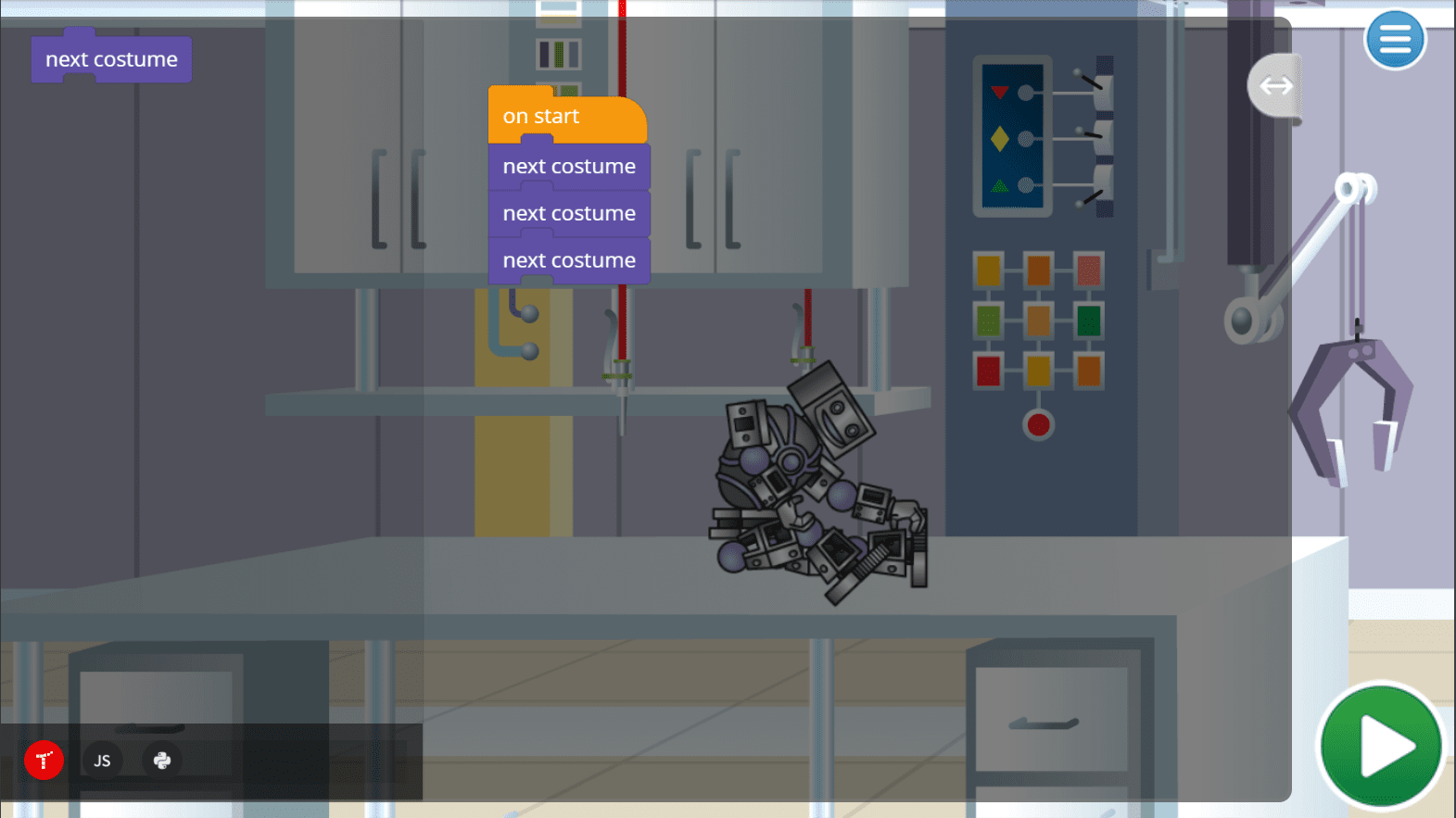Barbie™ You Can Be Anything™
- YEARS 1-5
- BEGINNER
- WEB IPAD
- 6 LESSONS
-
 Voiceovers
Voiceovers
Answer Key
Module 6: Make the Robot Stand

Module 9: Quiz
1.
2.
3.
4.
5.
6.
7.
8.
9.
10.
U.S. Standards
- CCSS-ELA: W.K.2, SL.K.1, SL.K.3, RF.K.4, W.1.2, SL.1.1, SL.1.3, RF.1.4.A, W.2.1, SL.2.1, SL.2.3, RF.2.4.A, SL.3.1, SL.3.3, RF.3.4.A, SL.4.1, SL.4.1.C, RF.4.4.A
- CCSS-Math** **: MP.1, K.CC.A.2, K.CC.B.4
- CSTA: 1A-AP-09, 1A-AP-10, 1A-AP-11, 1A-AP-14, 1A-AP-15, 1B-AP-10, 1B-AP-12, 1B-AP-15
- CS CA: K-2.AP.10, K-2.AP.12, K-2.AP.13, 3-5.AP.10, 3-5.AP.12, 3-5.AP.13, 3-5.AP.14, 3-5.AP.17
- ISTE: 1.c, 1.d, 5.d, 6.b, 7.c
U.K. Standards
Key stage 1
Pupils should be taught to:- understand what algorithms are, how they are implemented as programs on digital devices, and that programs execute by following precise and unambiguous instructions
- create and debug simple programs
- use logical reasoning to predict the behaviour of simple programs
- use technology purposefully to create, organise, store, manipulate and retrieve digital content
- use technology safely and respectfully, keeping personal information private; identify where to go for help and support when they have concerns about content or contact on the internet or other online technologies
Key stage 2
Pupils should be taught to:- design, write and debug programs that accomplish specific goals, including controlling or simulating physical systems; solve problems by decomposing them into smaller parts
- use logical reasoning to explain how some simple algorithms work and to detect and correct errors in algorithms and programs
- understand computer networks, including the internet; how they can provide multiple services, such as the World Wide Web, and the opportunities they offer for communication and collaboration
- use technology safely, respectfully and responsibly; recognise acceptable/unacceptable behaviour; identify a range of ways to report concerns about content and contact
Description
Programming is a way of thinking that is useful in any career. In this course, your students will discover how coding concepts can be applied to six exciting careers: Robotics Engineer, Musician, Astronaut, Farmer, Beekeeper, and Pastry Chef. Students will discover how programming can be used to animate characters, compose music, tell stories, design games, and even create art.
This course includes six lessons. Each lesson is designed for a class period of 45-60 minutes. Students will learn on their own as they are introduced to each career, learn coding concepts through interactive tutorials, solve coding puzzles, build their own projects using new coding skills, and take quizzes to review what they have learned. All student work is automatically tracked and assessed; and with access to Tynker's premium offerings, you'll even be able to monitor student progress and mastery charts.
Topics
- Sequencing
- Repetition
- Events
- Playing sounds
- Movement
- Animation
- Storytelling
- Keeping score
- Stamping
- Turning
- Problem solving, and debugging
Technical Requirements
* Online courses require a modern desktop computer, laptop computer, Chromebook, or Netbook with Internet access and a Chrome (29+), Firefox (30+), Safari (7+), or Edge (20+) browser. No downloads required.
* Tablet courses require an iPad (iOS 10+) with Tynker or Tynker Junior app installed and Internet access
Lesson
1 : Robotics Engineer
Barbie™ You Can Be Anything™
Time: 40+ minutes
Introduction
Tynker Blocks Introduced
Vocabulary
Objectives
Materials
Warm-Up (10 minutes)
Activities (30 minutes)
Facilitate as students complete all Robotics Engineer modules on their own:
1. Welcome (Video)2. Introduction (Video)
3. Choose a Robotics Engineer (Video)
4. Intro to Robotics Engineer (Video)
5. Concepts (Introduction)
6. Make the Robot Stand (Puzzle)
7. Intro to the DIY (Video)
8. Animate Your Robot (DIY)
9. Quiz (Multiple-Choice)

